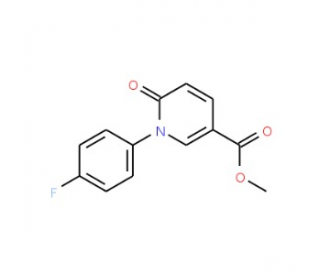详细说明
- Purity>97%, by SDS-PAGE under reducing conditions and visualized by silver stain
- Endotoxin Level<0.1 EU per 1 μg of the protein by the LAL method.
- ActivityMeasured by its ability to inhibit anti-CD3-induced proliferation of stimulated human T cells. Human T lymphocytes cultured for 72 hours with PHA were incubated for an additional 3 days in 96 well plates coated with 500 ng/mL anti‑CD3 and rrKIM-1.
The ED 50 for this effect is 0.4‑2 µg/mL.
Optimal dilutions should be determined by each laboratory for each application. - SourceMouse myeloma cell line, NS0-derived Ser18-Val238, with a C-terminal 6-His tag
- Accession #
- N-terminal Sequence
AnalysisSer18 - Structure / FormMonomer
- Predicted Molecular Mass25.4 kDa
- SDS-PAGE55-65 kDa, reducing conditions
| 3689-TM | | |
| Formulation Lyophilized from a 0.2 μm filtered solution in PBS. | ||
| Reconstitution Reconstitute at 100 μg/mL in sterile PBS. | ||
| Shipping The product is shipped at ambient temperature. Upon receipt, store it immediately at the temperature recommended below. | ||
| Stability & Storage: Use a manual defrost freezer and avoid repeated freeze-thaw cycles.
|
KIM-1 (Kidney-injury molecule-1; also TIM-1 and HAVCR) is a 50‑80 kDa, variably glycosylated, type I transmembrane glycoprotein that is a member of the TIM family of immunoglobulin superfamily molecules (1‑5). This gene family is involved in the regulation of Th1 and Th2‑cell-mediated immunity. In mouse, there are eight known TIM/KIM genes (# 1‑8) vs. only three genes in human (# 1, 3, 4) (1, 2, 5). It is unknown if the rat genome exactly parallels that of mouse. Rat KIM-1 is synthesized as a 307 amino acid (aa) precursor that contains a 21 aa signal sequence, a 214 aa extracellular domain (ECD), a 21 aa transmembrane segment and a 51 aa cytoplasmic domain (4). The ECD contains one V-type Ig-like domain and a mucin region characterized by multiple Thr-Ser-Pro motifs. The mucin region may undergo extensive O-linked glycosylation. The mouse KIM-1 gene is highly polymorphic and this may be reflected in rat (4, 6). In human, TIM-1 is known to circulate as a soluble form. It undergoes constitutive cleavage by an undefined MMP, releasing an 85 kDa soluble molecule (7). A similar process has now been described in rat (8). The ECD of rat KIM-1 is 50% and 81% aa identical to human and mouse KIM-1 ECD, respectively. The only two reported ligands for KIM-1 are TIM-4 and the hepatitis A virus (9, 10). However, others are believed to exist, and based on the ligand for TIM-3, one might be an S-type lectin (11). KIM-1 is found on CD4+ T cells and proximal renal tubular cells (4, 12). KIM-1 ligation induces T cell proliferation and promotes cytokine production (1, 11). In particular, it induces IL-4 production, and requires the KIM-1 cytoplasmic tyrosine phosphorylation motif (12). Alternatively, KIM-1 activation of TIM-4 induces cell cycle arrest (13).
- References:
- Meyers, J.H. et al. (2005) Trends Mol. Med. 11:1471.
- Kuchroo, V.K. et al. (2003) Nat. Rev. Immunol. 3:454.
- Mariat, C. et al. (2005) Phil. Trans. R. Soc. B 360:1681.
- Ichimura, T. et al. (1998) J. Biol. Chem. 273:4135.
- Kuchroo, V.K. et al. (2006) Adv. Immunol. 91:227.
- McIntire, J.J. et al. (2001) Nat. Immunol. 2:1109.
- Bailly, V. et al. (2002) J. Biol. Chem. 277:39739.
- Vaidya, V.S. et al. (2006) Am. J. Physiol. Renal Physiol. 290:F517.
- Feigelstock, D. et al. (1998) J. Virol. 72:6621.
- Zhu, C. et al. (2005) Nat. Immunol. 6:1245.
- Meyers, J.H. et al. (2005) Nat. Immunol. 6:455.
- de Souza, A.J. et al. (2005) Proc. Natl. Acad. Sci. USA 102:17113.
- Mesri, M. et al. (2006) Int. Immunol. 18:473.
- Long Name:T Cell Immunoglobulin Mucin-1
- Entrez Gene IDs:26762 (Human); 171283 (Mouse); 286934 (Rat); 102141332 (Cynomolgus Monkey)
- Alternate Names:CD365; HAVCR1; HAVCR-1; HAVCRT cell immunoglobin domain and mucin domain protein 1; hepatitis A virus cellular receptor 1; Kidney injury molecule 1; KIM1; KIM-1; T-cell immunoglobulin and mucin domain-containing protein 1; TIM1; TIM-1; TIM-1TIM; TIM1TIMD-1; TIMD1T-cell membrane protein 1












